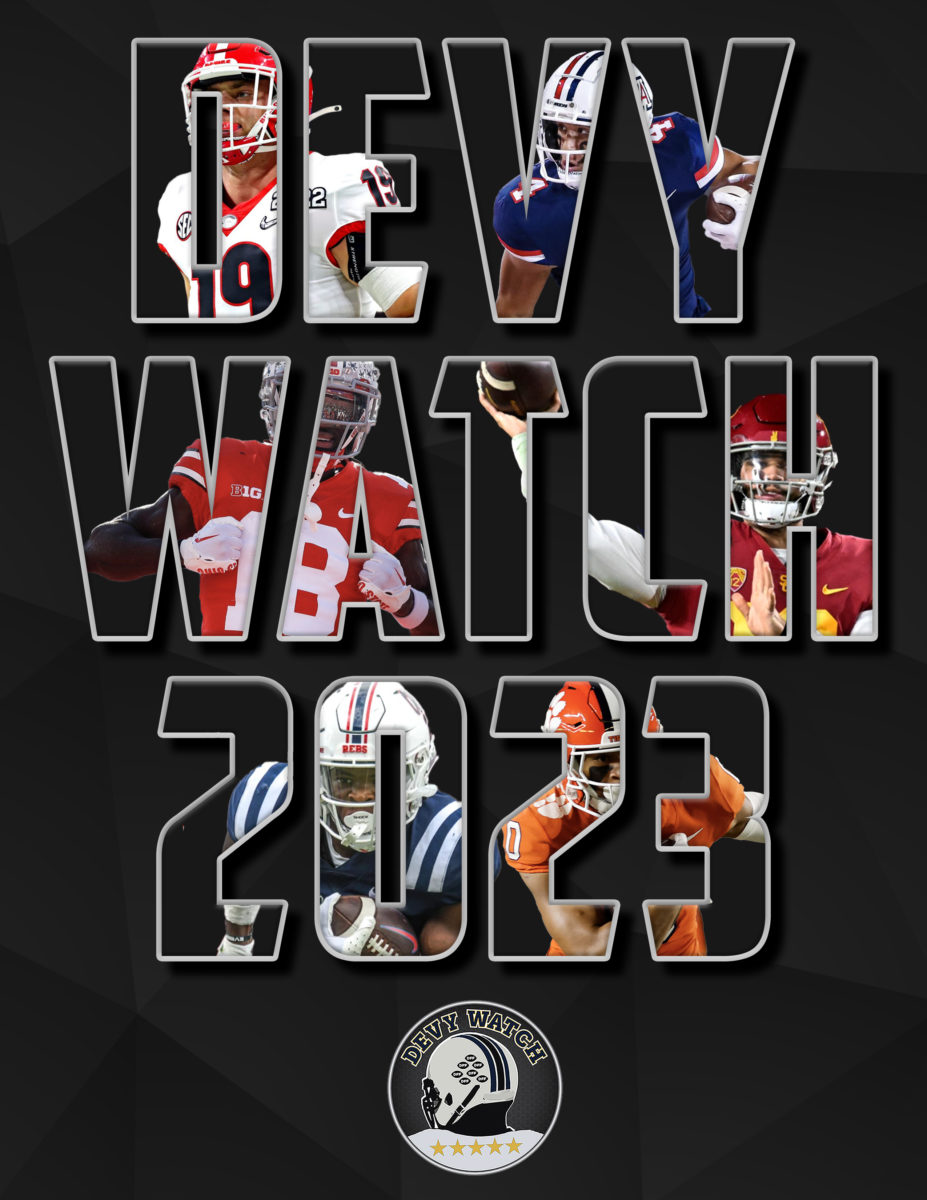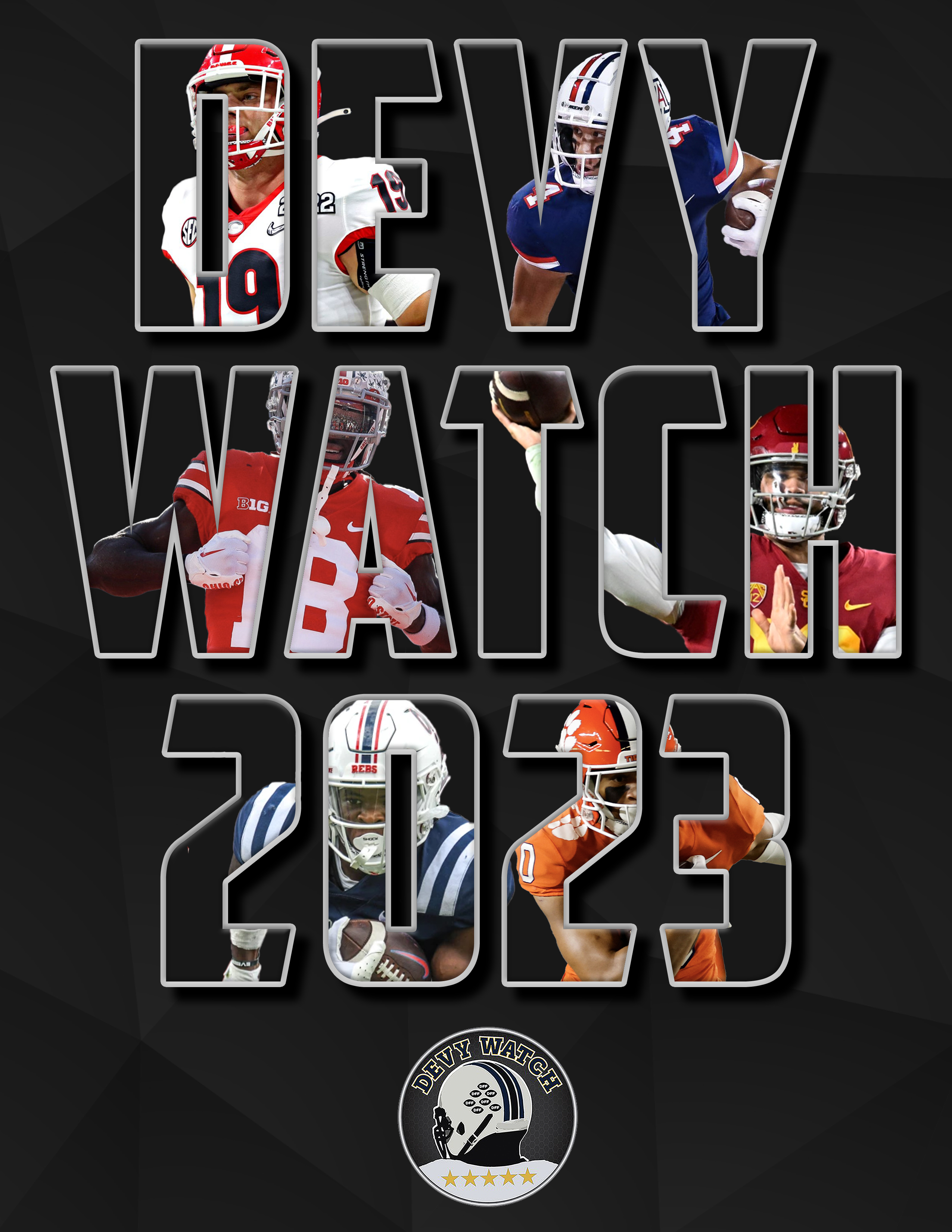Who is Trey Sermon?
Trey Sermon is a 6’0”, 216-pound running back from Marietta, Georgia. He played three seasons at Oklahoma, where he compiled 2,076 rushing yards and 22 rushing TDs on 339 carries. He also caught 36 balls for 391 yards and three TDs. As a true senior and a graduate transfer, Sermon will be immediately eligible at Ohio State in 2020. While he’s playing out his senior season in college, he’ll only be 22 on draft day.
When Sermon entered the Transfer Portal earlier this month, the Ohio State rumors started swirling immediately. In the end, they weren’t rumors at all. Between Sermon’s relationship with OSU RB coach Tony Alford, and the unfortunate injury to Master Teague, the timing was perfect.
Sermon is coming off an injury-shortened junior campaign at Oklahoma. At this time, he is currently rehabbing an ACL injury that he suffered in November.
Why did Ohio State need to utilize the Transfer Portal for a running back?
The departure of J.K. Dobbins left the RB room with more questions than answers. Coming into Spring, Ohio State was already thin at the position. Then, Master Teague, the Buckeyes’ most experienced runner, injured his Achilles at the start of Spring practice. That left Steele Chambers as the only healthy scholarship running back. Marcus Crowley was recovering from a knee injury before showing up this Spring with his arm in a sling. Demario McCall was geared-up to transition to slot receiver and compete for K.J. Hill’s vacated reps. McCall has bounced back and forth between RB and WR since he got to Ohio State, but he could probably step in at RB if worse comes to worst.
This group returns just 285 carries.
Teague – 152
McCall – 89
Crowley – 25
Chambers – 19
What are the Buckeyes getting with the addition of Trey Sermon?
With almost three seasons of film, we already know who Trey Sermon is. Even though he’s always been trapped in a committee, he is a seasoned runner, natural receiver, and powerful finisher. As a senior, in a new offense, Sermon finally has the chance to be a feature back. If you look at J.K. Dobbins’ 2019 season totals – 301/2003/21 rushing and 23/247/2 receiving – they virtually equal Sermon’s three seasons at Oklahoma. The defenses Sermon will face this season will be tougher than what he’s used to, but he’s stepping into a great opportunity on quite possibly the best offense he’s ever been on. He’s not going to rip off any of the jaw-dropping runs that we saw from Dobbins, but you can rely on him to make the first guy miss in space. Although, he has a little trouble making the unblocked defender miss behind the line of scrimmage. Sermon has a 200-yard game under his belt, but he is not as dynamic as Dobbins. We shouldn’t expect him to match Dobbins number-for-number. However, with the opportunity in front of him, Sermon should have a career year.
Let’s take a look at what Trey Sermon does well and where he has room for improvement.
Strengths
Finisher
The first thing I noticed about Sermon is the way he finishes his runs. Whether he lowers a shoulder, buries a defender with a stiff arm, or just barrels through someone, he usually finishes his runs with an attitude. Here’s a great example from the end of his freshman season in the CFP semifinal versus Georgia. The Bulldogs were forced to respect Sermon as a runner when he spelled Rodney Anderson for a couple of drives in the second quarter.
Balance
Sermon has uncanny balance for a back of his size and play style. He rarely goes down on first contact, but instead bounces off defenders, keeping his feet underneath him so he can make his next move or continue making forward progress. Nearly every clip in this article has an example of Sermon keeping his balance through contact.
Natural Receiver
Being able to contribute as a receiver is important for any running back in Ryan Day’s offense. While J.K. Dobbins excelled as a receiver, we still aren’t 100% sure about Master Teague’s receiving ability. Trey Sermon falls somewhere in between the two.
Sermon has always looked comfortable catching the ball. He’s a natural receiver. At Oklahoma, he ran multiple wheel routes in each game. Most of the time, he could have been pulling defenders or clearing space underneath, but the fact that both Kyler Murray and Jalen Hurts targeted him (even when he was double-covered) tells me that they trust him as a downfield receiver.
Sermon has been a reliable check-down option, and he’s confident catching the ball with his hands.
Vision/Patience/Anticipation
Despite what it looked like in 2019, Sermon has a good understanding of what it takes to be a successful runner. He knows when to slow his feet and be patient and how to pick his way through a defense. He knows when to press one hole to attract a defender in order to open another hole somewhere else along the line. He’s not going to win with speed, but he uses vision, patience, and anticipation to navigate the line of scrimmage and get to open space where his combination of power and shiftiness allow him to win one-on-one situations. Here, he finds the cutback lane, keeps his feet through contact, maintains his balance, and nearly scores.
The first game of 2019, against Houston, was one of the few times in 2019 that he looked like himself. This is one of my favorite runs from 2019; there were only 54 to choose from. Instead of hitting the immediate hole and gaining three or four yards, he demonstrates patience and good decision making giving Oklahoma a new set of downs. He slips through the line giving himself a two-way go at the second level (left toward the LB or right toward the DB). Then, Sermon decides to go right and take on the DB in space. Advantage Sermon.
Sermon’s ability to anticipate an opening and position himself to hit the hole as soon as it develops compensates for his lack of burst. Against Texas Tech, he’s already planted his foot and getting skinny as this hole opens. This trait is crucial to his production because he isn’t going to create very much when running toward the sideline.
Sermon’s patience and vision aren’t limited to the line of scrimmage. We’ve already looked at one example of him making the correct decision at the second level. Here’s an example of his downfield patience. After picking his way through the defense, he could have tried to outrun everyone down the middle of the field, but he saw a blocker to his right. So, he decided to make his job easier and let Hollywood Brown do the heavy lifting.
Weaknesses
Speed
It’s no secret that Sermon lacks long speed. He’s not going to erase many angles or win many foot races against DBs. With his play-style, he doesn’t need to. Let’s take a look at the first play of the game against Oklahoma State in 2018.
Would we have rather seen Sermon score on this carry? Of course. In the end, are you upset about a 60-yard gain? I’m not. He’s not a home-run hitter, but with 27 runs of 20 yards or more through three seasons, he’s good for explosive, chunk plays.
Burst
Even though it seemed Sermon played most or all of 2019 injured, there has never been a visible burst or changing of gears when he runs. He’s been able to overcome that with patience, vision, anticipation, and excellent shiftiness for his size.
Pass Protection
Looking back at the 2018 season, Sermon didn’t pass block as much as he guarded an area near the quarterback. There was an obvious improvement in his ability to do this in his limited 2019 reps. There is still room for improvement when it comes to understanding which player to block, but the physicality Sermon demonstrates at the end of his runs, lets me know that he can become an effective pass blocker.
Verdict
The 2018 Trey Sermon was a completely different runner than the 2019 Trey Sermon. He made defenders miss by stringing together moves and finished runs with a stiff arm and an attitude. He didn’t look right in 2019. He never had any juice. He was rarely able to turn the corner against a defense. He didn’t finish his runs the same way. It looked like he was satisfied taking what the defense gave him.
Once rehabbed, if Sermon is as confident and physical as he was in 2017 and 2018, Ohio State is getting a player that will help fill the void left by Dobbins, especially early in a big contest at Oregon. Sermon has played in a zone run scheme for the past three seasons. He has experience playing alongside a dual-threat QB. He has experience as the pitchman in the option game. Ohio State won’t ask him to do anything that he didn’t do at Oklahoma. They’ll just ask him to do a lot more of what he’s already done. Sermon’s ability as a pass-catcher and willingness as a run blocker will go a long way in the Ohio State offense.










